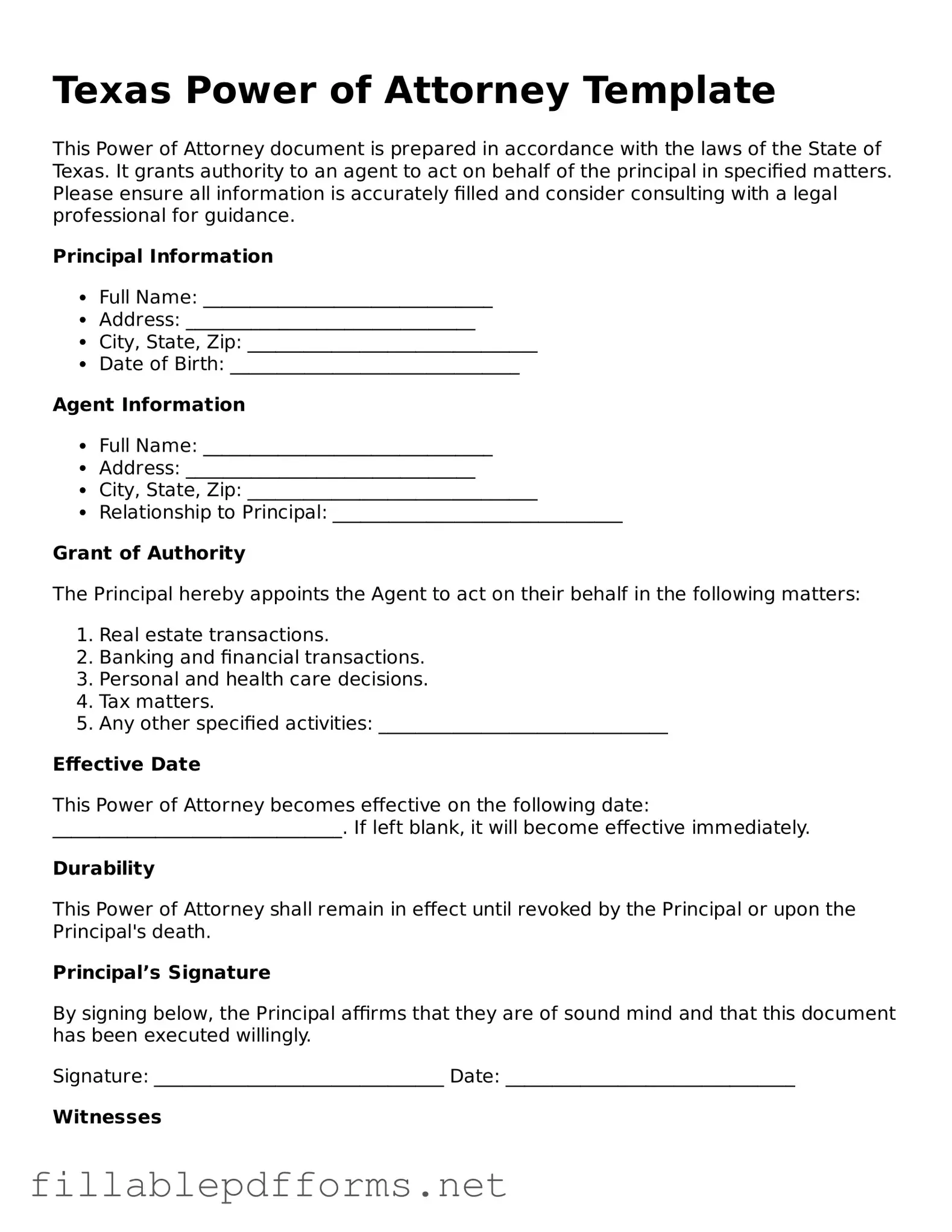In Texas, a Power of Attorney (POA) form serves as a vital legal tool that allows individuals to designate someone they trust to make decisions on their behalf. This document can cover a range of powers, from managing financial affairs to making healthcare decisions, depending on the type of POA established. A Durable Power of Attorney remains effective even if the principal becomes incapacitated, ensuring that their affairs can be managed without interruption. Alternatively, a Medical Power of Attorney specifically grants authority over health-related decisions, allowing the designated agent to act according to the principal's wishes when they are unable to communicate. Understanding the nuances of these forms is essential, as they must be executed properly to be valid. Additionally, the Texas POA form requires the signature of the principal and, in some cases, witnesses or a notary public to ensure its legality. By taking the time to create a Power of Attorney, individuals can safeguard their interests and ensure that their preferences are honored, even in challenging circumstances.
